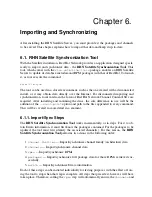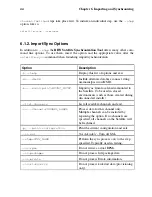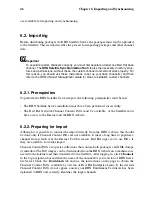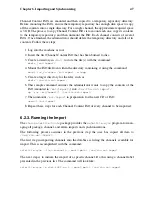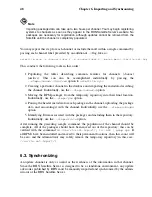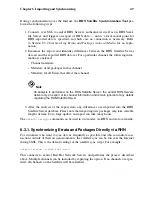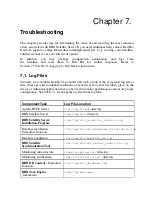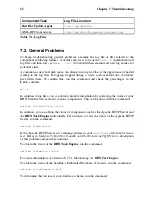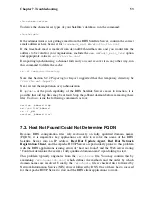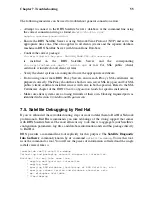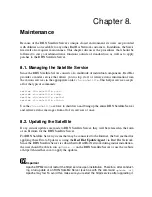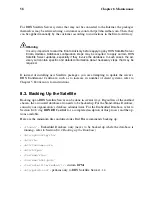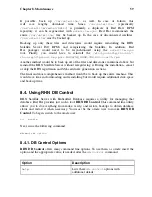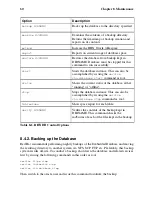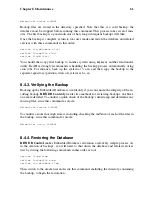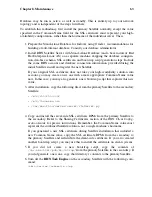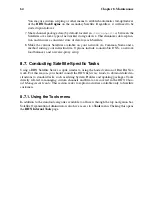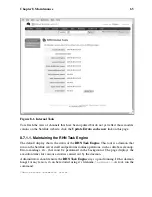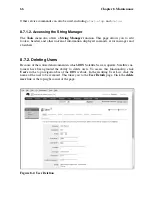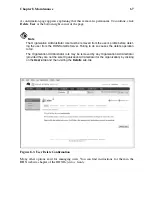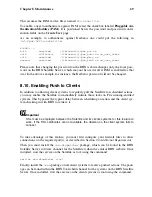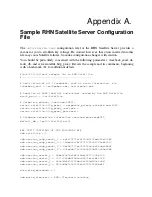
Chapter 8.
Maintenance
Because of the RHN Satellite Server’s unique closed environment, its users are provided
with abilities not available to any other Red Hat Network customers. In addition, the Satel-
lite itself also requires maintenance. This chapter discusses the procedures that should be
followed to carry out administrative functions outside of standard use, as well as to apply
patches to the RHN Satellite Server.
8.1. Managing the Satellite Service
Since the RHN Satellite Server consists of a multitude of individual components, Red Hat
provides a master service that allows you to stop, start, or retrieve status information from
the various services in the appropriate order:
rhn-satellite
. This helper service accepts
all of the typical commands:
service rhn-satellite start
service rhn-satellite stop
service rhn-satellite restart
service rhn-satellite status
Use the
rhn-satellite
service to shut down and bring up the entire RHN Satellite Server
and retrieve status messages from all of its services at once.
8.2. Updating the Satellite
If any critical updates are made to RHN Satellite Server, they will be released in the form
of an Erratum for the RHN Satellite Server.
For RHN Satellite Server systems that may be connected to the Internet, the best method for
applying these Errata Updates is using the
Red Hat Update Agent
via Red Hat Network.
Since the RHN Satellite Server is subscribed to Red Hat Network during initial installation,
the user should be able to run
up2date -u
on the RHN Satellite Server or use the website
at https://rhn.redhat.com to apply the updates.
Important
Apache RPMs do not restart the httpd service upon installation. Therefore, after conduct-
ing a full update of an RHN Satellite Server (such as with the command
up2date -uf
),
Apache may fail. To avoid this, make sure you restart the httpd service after upgrading it.

